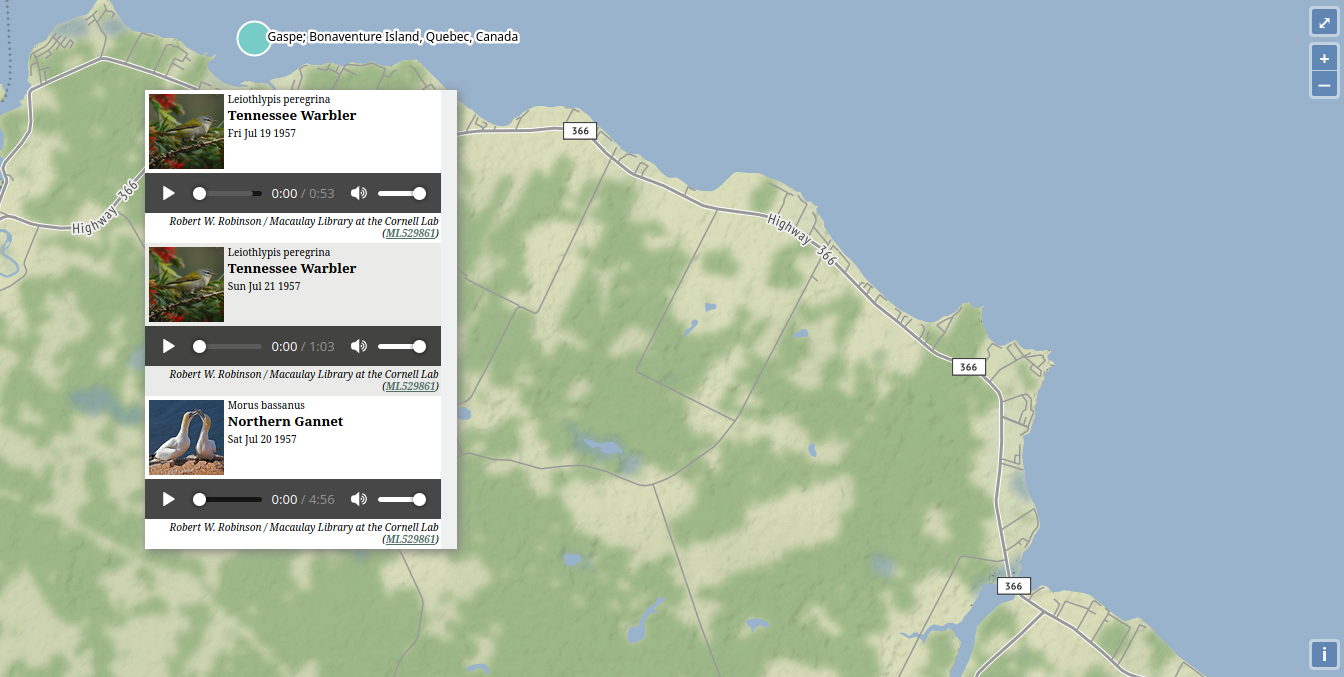audiomnia v0.1.3
Audiomnia
A global bioacoustics map
Data provided by the The Macaulay Library at the Cornell Lab of Ornithology and iNaturalist.
Table of Contents
Usage
https://audiomnia.com

The main interface is a simple visualization of the bioacoustic samples in the database. Drill down geographically by clicking. When the zoom level reaches maximum a listing of samples will be displayed.
Local One-liner
To run the application locally, you can simply run:
$ npx audiomnia # or run a specific version i.e. npx audiomnia@0.1.1This requires node.js, which can be installed easily using nvm.
Contributing
Happy to consider issues and PRs are highly encouraged. Experience with OpenLayers, Scrapy, and front-end web development is welcome, but more importantly bioacoustics, conservation, ornithology, and marine science expertise is needed, perhaps even moreso.
Setting up for development
First, grab the source code and install the dependencies:
$ git clone https://github.com/audiomnia/audiomnia
cd audiomnia
npm installThen, npm start will run the app for you and should work
"out of the box."
Scrapers
Audiomnia uses Scrapy for its scrapers.
Currently, the data sets are small enough to check into the repo, so checking out the source code will also include the geojson files. However, if you're working on the scrapers.
npm run scrapeThis is shorthand for:
cd scrapers
scrapy crawl macaulaylibrary -a MAX=50000 --loglevel WARNINGYou can read the Scrapy docs to learn more about the scrapy crawl
Scrapy cache
By default, HTTP Caching is enabled in the Scrapy config. This will deposit a LOT of data in ./scrapers/scrapers/.scrapy. This will make your development much easier and your scraping much more polite.
Tests
UI Tests using Mocha + Puppeteer are in the test/ folder.
License
GPL-3.0 © 2020 Audiomnia
